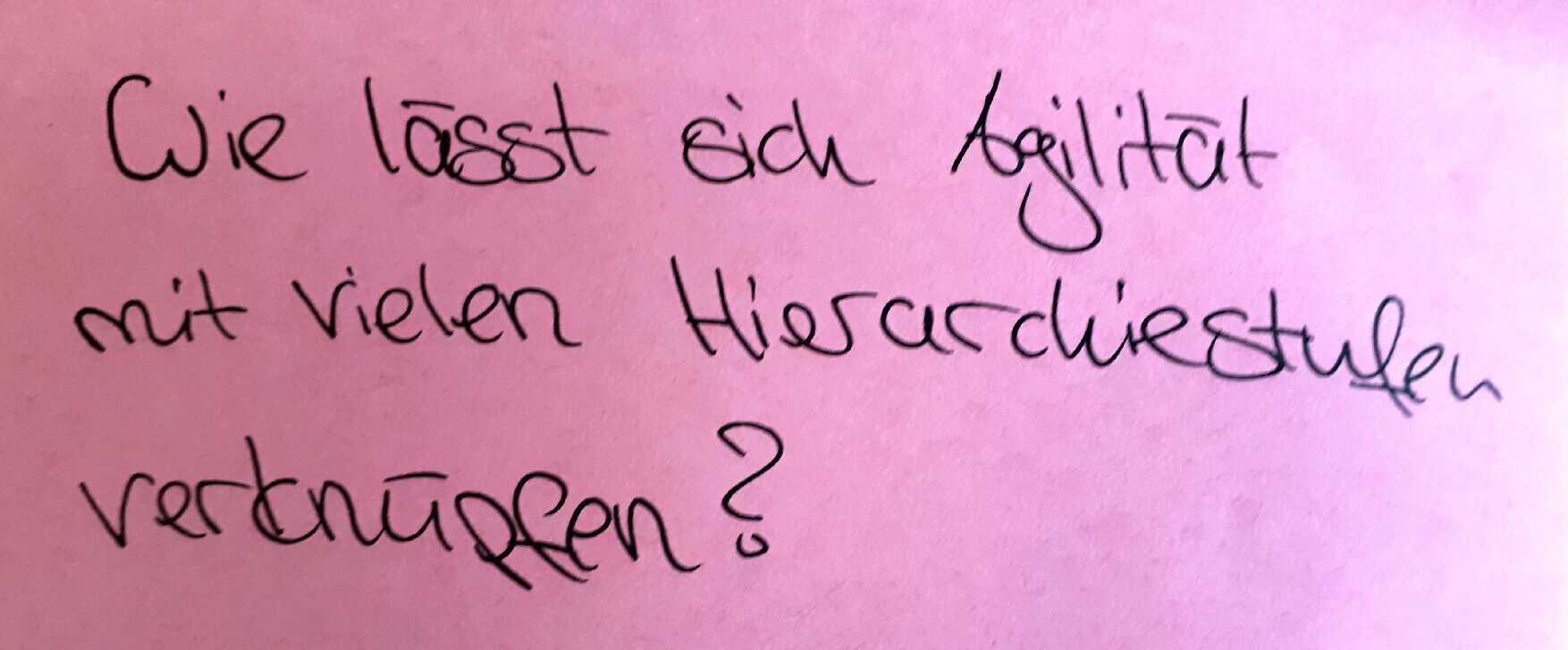You have been given the Agile marching orders? Do you want to go into battle yourself? But before you get started, you still need a bit of clarification? You are not alone. I, for example, have recently been asked:
How Does Agile Work With Many Levels of Hierarchy?

That’s an easy one to answer: Difficult. To not at all.
Why?
The Agile source code is Lean. So the motto is: “Avoid waste!”. This means everything that hinders the creation of value.
Hierarchies usually belong in this waste category because they – without reason or need – make the process more expensive and slow. Incidentally, neither of these is particularly popular with clients and investors.
But listen up!
Anyone who thinks that Agile works without hierarchies is mistaken! An agile approach does work with hierarchies and does so consciously. Just differently than in classical management. That is, NOT with hierarchies of STATUS, but with hierarchies of DECISION. Apart from that, the rule is: Eye-level.
The fundamental agile consensus is that EVERYONE is responsible for the best possible result. For a smooth process and in the event that the team has a hard time deciding in some cases, and ONLY THEN, it is clear who is allowed to make which decision.
For the roles in Scrum, their responsibilities and tasks are regulated e.g. like this:
- The product owner decides WHAT is to be done in discussion with the stakeholders and the development team.
- The experts in turn, i.e. the development team, decide HOW to go about it.
- Management and stakeholders, on the other hand, decide what the overarching strategy is, what the corporate or product vision is and whether and how all this is financed (setting the framework). After all, he who pays decides on these things.
But then again, not about much more.
Wanna Read More?
- Balle, Michael u.a.: The Lean Strategy: Using Lean to Create Competitive Advantage, Unleash Innovation, and Deliver Sustainable Growth.
- Emiliani, Bob: The Triumph of Classical Management Over Lean Management. How Tradition Prevails and what to Do about it.
- Laloux, Frederic: Reinventing Organizations.
- Robertson, Brian J.: Holacracy. The Revolutionary Management System that Abolishes Hierarchy.
- Rother, Mike: Die Kata des Weltmarktführers. Toyotas Erfolgsmethoden.
- Sutherland, Jeff: Scrum. The Art of Doing Twice the Work in Half the Time. (Deutsch: Die Scrum-Revolution)
- Verhaeghe, Paul: Autorität und Verantwortung.